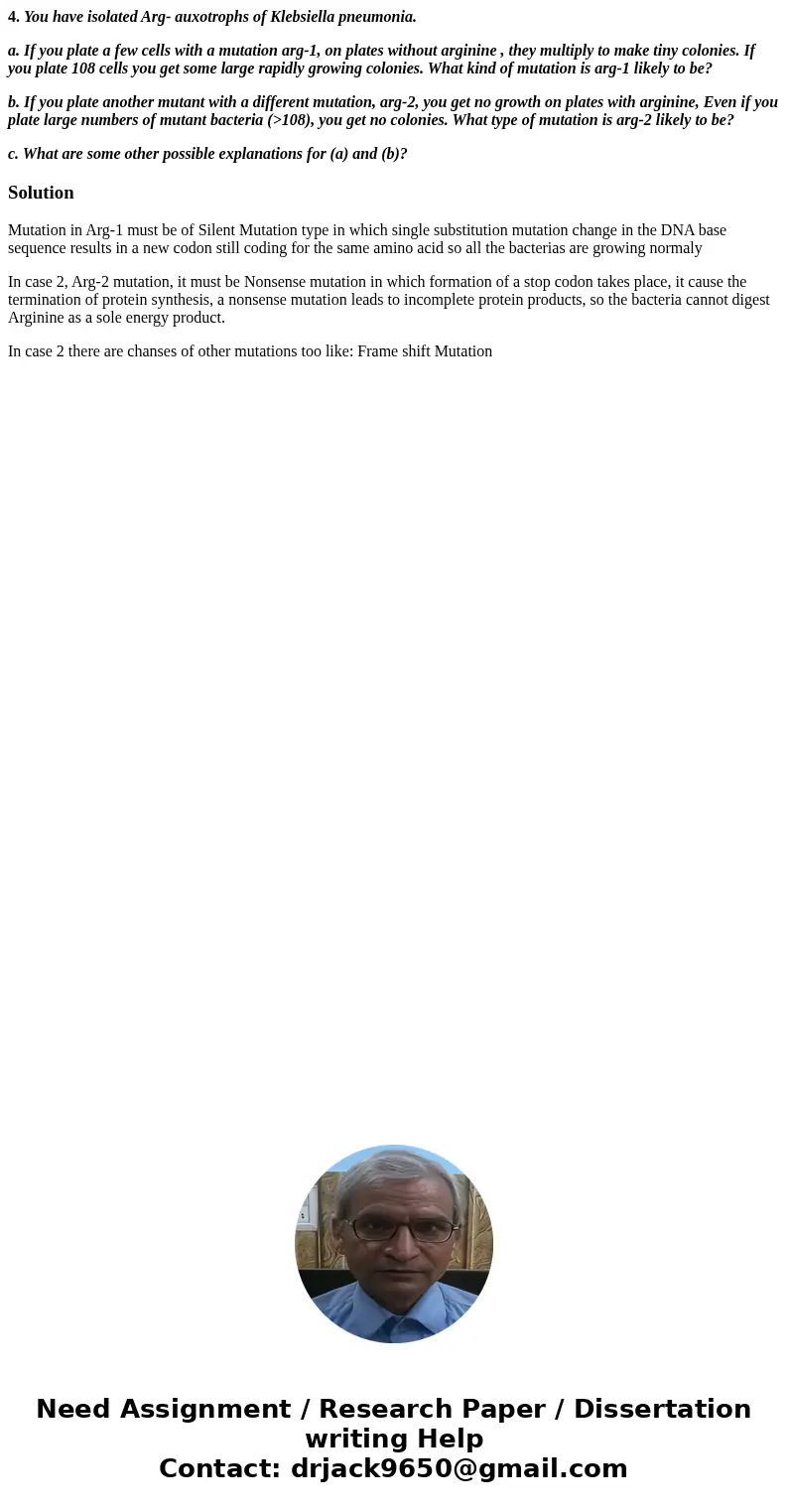4 You have isolated Arg auxotrophs of Klebsiella pneumonia a
4. You have isolated Arg- auxotrophs of Klebsiella pneumonia.
a. If you plate a few cells with a mutation arg-1, on plates without arginine , they multiply to make tiny colonies. If you plate 108 cells you get some large rapidly growing colonies. What kind of mutation is arg-1 likely to be?
b. If you plate another mutant with a different mutation, arg-2, you get no growth on plates with arginine, Even if you plate large numbers of mutant bacteria (>108), you get no colonies. What type of mutation is arg-2 likely to be?
c. What are some other possible explanations for (a) and (b)?
Solution
Mutation in Arg-1 must be of Silent Mutation type in which single substitution mutation change in the DNA base sequence results in a new codon still coding for the same amino acid so all the bacterias are growing normaly
In case 2, Arg-2 mutation, it must be Nonsense mutation in which formation of a stop codon takes place, it cause the termination of protein synthesis, a nonsense mutation leads to incomplete protein products, so the bacteria cannot digest Arginine as a sole energy product.
In case 2 there are chanses of other mutations too like: Frame shift Mutation

 Homework Sourse
Homework Sourse